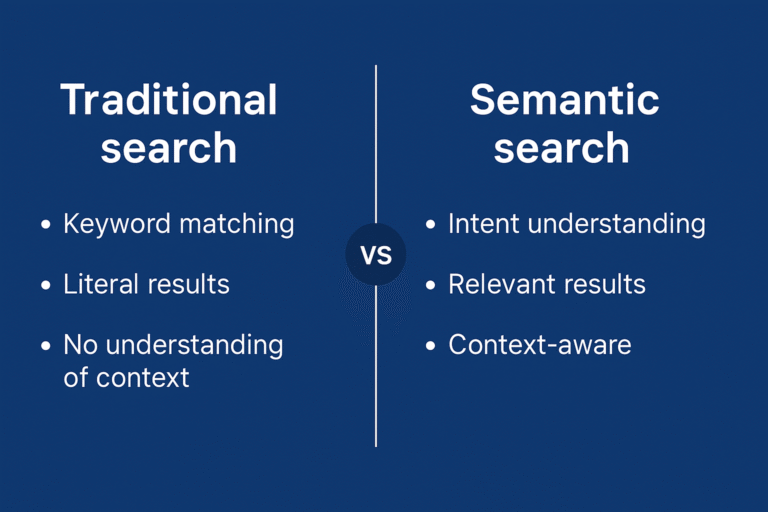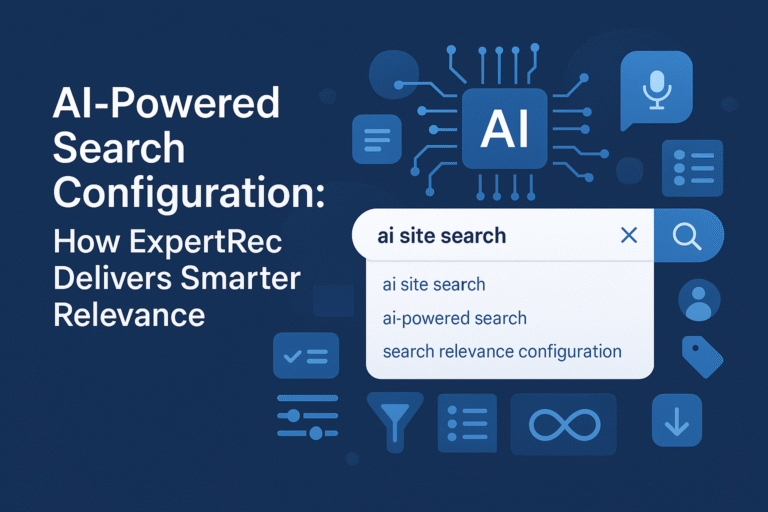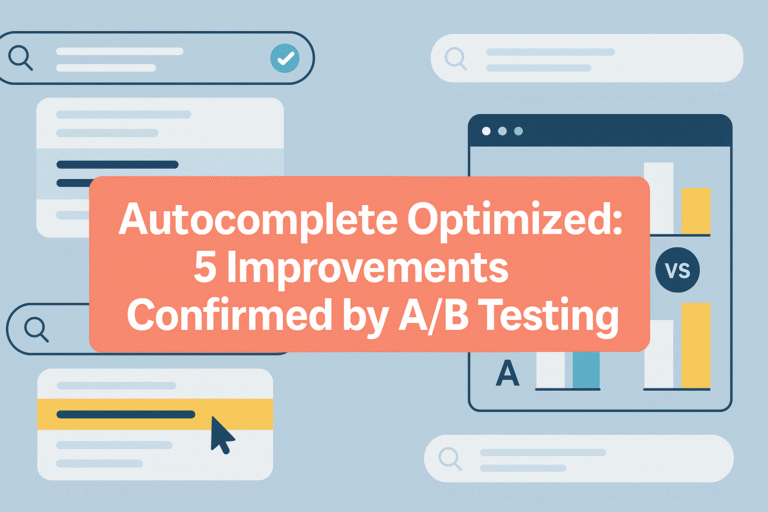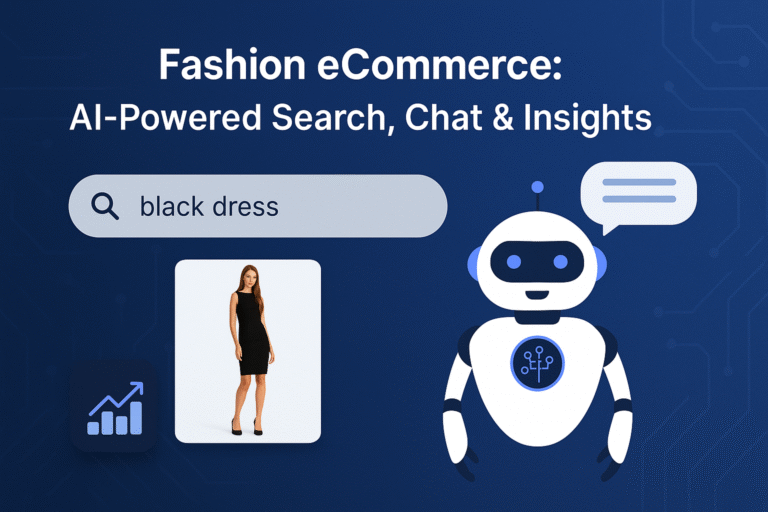Search technology has evolved significantly over the past two decades. While traditional search engines relied on exact keyword matching, modern systems are shifting toward semantic search, which understands the intent behind queries. For ecommerce platforms and content-driven websites, this transition is not just a technical upgrade it’s a strategic necessity.
In this post, we’ll explore the key differences between traditional and semantic search, analyze their benefits and limitations, and explain how Expertrec helps businesses harness the full power of semantic search without the implementation burden.
What is Traditional Search?
Traditional search systems operate based on keyword matching. They scan through indexed documents or content and retrieve results that contain exact or partial matches of the words typed by the user.
How It Works:
-
Tokenization: Breaks the user query into individual words or phrases.
-
Inverted Index Lookup: Searches for documents that include these tokens.
-
Ranking: Results are ranked based on frequency, keyword position, or other rule-based heuristics.
For example, if a user searches for “wireless headphones”, a traditional search engine returns documents containing the exact phrase or those that include both “wireless” and “headphones”.
Advantages:
-
Fast and efficient
-
Easy to implement
-
Works well with structured content
-
Transparent scoring logic
Limitations:
-
Does not understand context or meaning
-
Fails with synonyms, plurals, or misspellings
-
Poor support for natural language queries
-
User intent is often lost
What is Semantic Search?
Semantic search goes beyond exact word matches. It interprets the meaning of a query using natural language processing (NLP), machine learning, and vector embeddings. Instead of searching for “words,” it looks for concepts.
How It Works:
-
Text Embedding: Transforms both queries and documents into vector representations using models like BERT, SBERT, or OpenAI Embeddings.
-
Semantic Matching: Measures vector similarity (e.g., cosine similarity) to find content that aligns with the query’s intent.
-
Contextual Ranking: Uses relevance signals like entity recognition, search history, or intent classification to sort results.
For example, a search for “best budget-friendly over-ear headphones” could return results like “affordable wireless headphones with high battery life”, even if the keywords don’t match.
Advantages:
-
Understands synonyms, context, and natural language
-
Supports voice and conversational queries
-
Improves relevancy, especially for long-tail or ambiguous queries
-
Learns from user behavior over time
Limitations:
-
Requires more computational resources
-
Can behave like a black box (less explainable)
-
Needs tuning for specific domains
-
Higher implementation complexity
Traditional Search vs Semantic Search: A Feature Comparison
| Feature | Traditional Search | Semantic Search |
|---|---|---|
| Matching Logic | Keyword-based | Meaning-based (intent + context) |
| Handling Synonyms | Poor | Excellent |
| Understanding User Intent | Limited | High |
| Relevance of Results | Surface-level | Deep contextual matching |
| Multilingual Support | Minimal | Strong (with multilingual embeddings) |
| Misspelling/Plurals Tolerance | Weak | Adaptive with language models |
| Personalization | Rule-based (if at all) | AI-driven, based on user behavior |
| Integration Effort | Low | High unless using a managed platform |
Is It Worth Shifting from Traditional to Semantic Search?
As user behavior evolves, particularly in ecommerce and content-heavy sites, the demand for meaningful, fast, and accurate results is rising. The decision to switch from traditional to semantic search should consider several factors:
When Traditional Search is Sufficient:
-
You run a small site with limited content
-
Queries are always predictable (e.g., SKU or catalog IDs)
-
Implementation simplicity is your top priority
When Semantic Search is Necessary:
-
You have a large product catalog or knowledge base
-
Users often phrase queries conversationally
-
You want to support voice search or AI chatbots
-
You need intent-based ranking and personalization
In ecommerce, semantic search directly impacts product discovery, conversions, and customer retention. Failing to meet users’ search expectations often results in high bounce rates and lost revenue.
Alternatives and Technical Complexity
You’ll need:
-
Text embedding models (BERT, OpenAI, etc.)
-
Vector databases (FAISS, Pinecone, Weaviate)
-
Infrastructure for indexing and querying vectors
-
Ranking logic and frontend integration
Cloud providers (like OpenAI, Cohere) offer embedding APIs but still require engineering to connect these components.
This is where Expertrec offers a powerful, no-code, ready-to-deploy alternative.
How Expertrec Makes Semantic Search Simple
Expertrec offers a managed, semantic search solution purpose-built for ecommerce and digital platforms. It removes the complexity of integrating AI models and infrastructure.
Key Capabilities:
1. AI-Powered Semantic Matching
Expertrec uses custom-tuned embeddings optimized for ecommerce and multilingual content, enabling relevance that matches user intent—not just keywords.
2. Instant Integration
Plug-and-play widgets, Shopify/BigCommerce modules, and JavaScript-based setups get you running in hours, not weeks.
3. Customizable UI
Seamlessly integrate with your product page UI and search bar design to maintain a minimal, on-brand experience.
4. Real-Time Indexing
Keep your search updated with changes to your product catalog or content library without manual intervention.
5. Analytics & Optimization
Get insights on what users search, where they drop off, and how search can convert better—backed by automatic relevance tuning.
6. No Vendor Lock-in
Unlike relying solely on external embedding APIs, Expertrec’s infrastructure can run in your preferred cloud or on-premise.
Final Verdict
The move from traditional search to semantic search is not just a trend—it’s a necessity in today’s user-first digital landscape. While traditional search engines still serve basic needs, they fall short in meeting the expectations of modern users who speak in natural language, expect personalization, and demand contextual accuracy.
Semantic search delivers richer, more relevant experiences, but building such a system from scratch involves significant cost, talent, and time.
With Expertrec, businesses gain all the benefits of AI-powered semantic search without the complexity. If you want your search bar to do more than just match words, Expertrec is the partner that gets you there faster.
FAQs
Traditional search relies on exact keyword matches, while semantic search understands user intent and context using AI and NLP.
2. Is semantic search always better?
Semantic search offers superior relevance and user experience, but it may be overkill for small sites or fixed query sets.
3. Can I implement semantic search with Elasticsearch?
Yes, but it requires significant customization, including embedding pipelines and vector search integration.
4. How does Expertrec handle semantic search?
Expertrec uses domain-optimized embeddings, real-time indexing, and built-in AI ranking to deliver semantic search with minimal setup.
5. Does semantic search work with voice queries?
Yes, semantic search handles natural language and conversational input, making it ideal for voice and chat interfaces.
6. Is Expertrec suitable for non-ecommerce websites?
Yes. While it’s optimized for ecommerce, Expertrec also supports content-heavy portals, documentation sites, and learning platforms.




